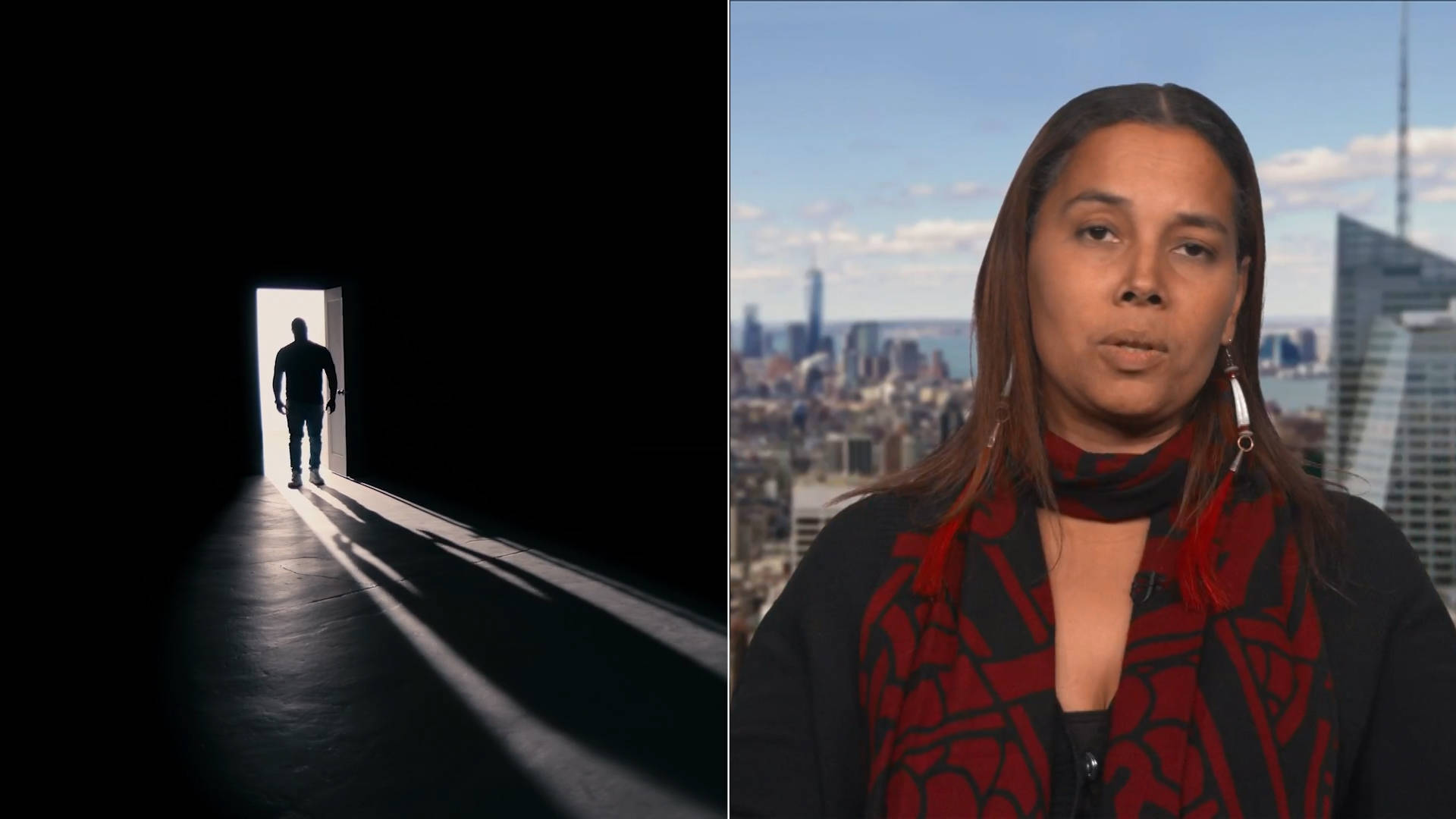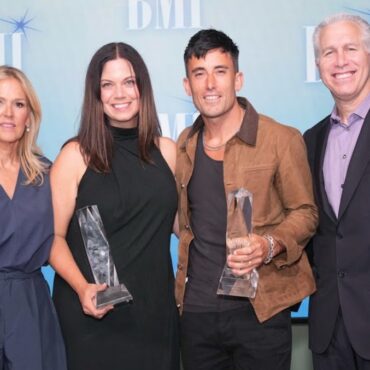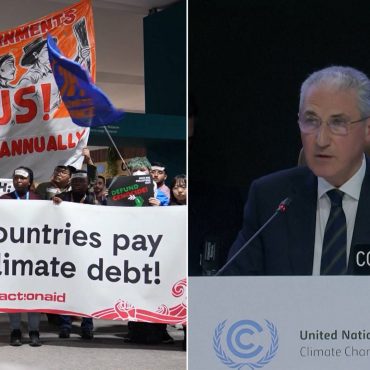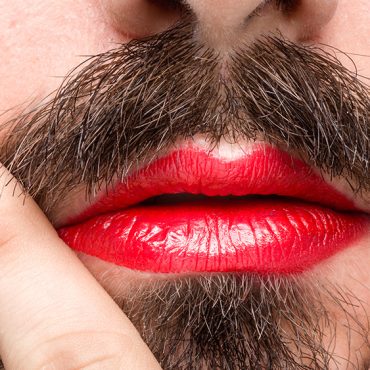This is a rush transcript. Copy may not be in its final form.
AMY GOODMAN: This is Democracy Now!, democracynow.org, The War and Peace Report. I’m Amy Goodman.
We’re continuing this Juneteenth special with the musician Rhiannon Giddens. In October, she marked International Wrongful Conviction Day by releasing a video for her song “Another Wasted Life.” The song was inspired by Kalief Browder, a Bronx resident who died by suicide in 2015 at the age of 22 after being detained at Rikers Island jail for nearly three years, after being falsely accused at the age of 16 of stealing a backpack. He was held in solitary confinement for two years and was repeatedly assaulted by guards and other prisoners.
In the video for “Another Wasted Life,” Rhiannon Giddens features 22 people who were wrongly incarcerated. Together, the men collectively served more than 500 years in prison for crimes they did not commit. Rhiannon Giddens made the video in partnership with the Pennsylvania Innocence Project. This is an excerpt.
RHIANNON GIDDENS: [singing] He’s given solitary time
An institutional caprice
It’s a torture of the soul
The narrow confines of control
Thrown down the stinking hole with no hope of release
It’s just another wasted life
It’s just another wasted life
It’s just another wasted life
It’s just another wasted life.
AMY GOODMAN: That was “Another Wasted Life” by our guest, Rhiannon Giddens. The song is featured on her album You’re the One. I asked Rhiannon Giddens to talk about the album and that song.
RHIANNON GIDDENS: Well, it’s an interesting thing. You know, I’ve — a lot of my work, most of my work, you know, especially since going solo — I mean, obviously, The Carolina Chocolate Drops had a mission, you know, of sort of telling the world about Black string band music, of spreading our mentor Joe Thompson’s family music around and just trying to educate about the true history of the banjo. And then, when I went solo, I was able to really go to things that I had been wanting to do, you know, during the band years, but it wasn’t quite the right time, really focusing on women’s voices, focusing on stories from the time of slavery. And really, the common sort of denominator has always been sort of this sense of mission, whether it’s in the band or solo.
But the thing is, that mission is weighty, you know, and I just kind of had gotten to a point where I was like, I kind of feel like if I keep going with — you know, on this trajectory, I’m going to burn out, and then I’m not going to be of any good to anybody, so it’s time to kind of take a turn for a second and explore other parts of my artistry. And that’s what You’re the One really comes out of. It’s songs that I’ve written over the course of like 14 years, that were just, you know, fun songs, songs that were inspired by some of my idols, like Dolly Parton and Aretha Franklin, a lot of like, you know, love songs, a lot of, you know, “You, dog, get out of my house” songs, you know, kind of those sorts of things.
But I can’t — I really can’t leave the mission behind even for this record. So I also really wanted to include “Another Wasted Life,” which I had written, you know, after reading about Kalief Browder some years ago, and had sort of put into a book and kind of went, “OK, like, when it’s the right time, I’ll know what to do with the song.” And then, when this album was sort of coalescing and coming together, I was like, “This is it,” because, you know, it’s a different approach. Like, what I have done before, like, say, with something like Freedom Highway, which is my, I guess, civil rights record, every song there is really kind of infused with thinking about the history of the United States, thinking about, you know, the legacy of slavery, thinking about civil rights and all of that, and it’s a very kind of cohesive album, but it’s all very — every single song kind of has that thought behind it, whereas with this album, all the songs except for one are fun. You know, even the sad love songs are still fun songs. And this kind of sticks out as the mission song. And it’s a different approach, because this then gets all the focus, you know, in terms of the emotional weight and, you know, what it does. So, I’m really excited that I’ve had the opportunity to put it out there, surrounded by, you know, something different, so that it really kind of has an opportunity to jump out at the listener.
AMY GOODMAN: I want to go to Kalief Browder in his own words. This is Kalief speaking to the HuffPost Live’s Marc Lamont Hill back a decade ago, in 2013. Kalief had spent, as we said earlier, three years at Rikers in New York without charge. He was a 16-year-old high school sophomore when he was first detained on suspicion of stealing a backpack. He said while he was in solitary at Rikers, the guards often refused to give him his meals.
KALIEF BROWDER: If you say anything that could tick them off any type of way, some of them, which is a lot of them, what they do is they starve you. They won’t feed you. And it’s already hard in there, because if you get the three trays that you get every day, you’re still hungry, because I guess that’s part of the punishment. So, if they starve you one tray, that could really make an impact on you. And —
MARC LAMONT HILL: How much were you starved?
KALIEF BROWDER: I was starved a lot. I can’t even — I can’t even count.
AMY GOODMAN: Kalief Browder went on to say he was once starved four times in a row — no breakfast, lunch, dinner or breakfast again — after enduring nearly 800 days in solitary confinement and abuses. Browder was only released when the case was dismissed. He would go on to college, but he died by suicide on June 6, 2015, at his home in the Bronx. He was 22 years old. Rhiannon Giddens, can you talk about how you discovered Kalief’s story? And then talk about the other men who are included in this video. I mean, this is just a mind-blowing, paradigm-shattering video that will affect anyone who sees it.
RHIANNON GIDDENS: Well, I am not sure, to be honest with you. It must have been a news story, you know, a news item, or something like that, where I just read the whole thing. You know, it was obviously after he committed suicide, because that’s the thing that kind of got me. You know, it was not only how he was treated, you know, an innocent teenager put through the system in such a brutal way, but it’s the fact that he — you know, the transition back into the world. I mean, who knows what was going through his mind? But, obviously, like, it changed him, you know? And I just felt like his life was stolen from him, not only the hours that he had to spend inside enduring what he had to endure, but also the hours that he’s not going to — he never got to live, you know? And I feel like that that just kind of went all over me, and I just sat down and wrote it.
So, when the opportunity to do You’re the One and have it to be sort of a big album, you know, that Nonesuch was — you know, my label was putting a lot of resources behind the record, so I’d be able to put “Another Wasted Life” on there. I knew very early on that I wanted to do a video. You know, videos these days are really kind of — unless you’re like a huge, huge megastar, they’re almost not worth the money that you put into, because, like, how do you get them out, and people don’t even see them on social media half the time. And so it’s really hard to justify making a video a lot of times these days. But I knew that that’s what I wanted to make a video for, was “Another Wasted Life.” And I also knew, after we started working with the Pennsylvania Innocence Project, that I wanted to center the men who had been exonerated. I wanted to center these guys, you know, because we can’t center the people who are still in prison because we can’t reach them. So, I knew that I wanted to be decentered in this and just enough in to make the connection. I knew that right away. And so, when we reached out to the Pennsylvania Innocence Project and said this is kind of what we want to do, and they were just really great and sent that around to some of the guys that they have freed, because they’ve been working so hard to free innocent men who are in prison, and 22 guys reached back out and said, “Yes, we’d like to be a part of this.” And we took, you know, a day, and we filmed the video.
And it was just, like — it was such an experience to be there and talk to these guys. And like all of them were like, “We’re here for those who are still in. We are here for those guys who are still in cages, thinking that nobody cares about them.” And so many of them were like, “Man, we’re just so grateful that people care. We’re just so grateful that you’re doing this.” And I just kind of like — I was sitting there, going, “Well, it’s like literally the least I can do. Like literally.” You know what I mean? It’s just like, that’s so — it’s such a skewed thing that there’s clearly not — they don’t feel like people care. Because I’m sure, in their experience, a lot of people don’t care, you know? And the fact that there are these Innocence Projects full of people who do care is wonderful, and that I’m doing my little tiny might, you know, to raise awareness. Bt it’s like that was the thing that hit me the most, is like just the sense of hopelessness, that they would talk about being in prison, thinking, like, “Nobody cares that I’m in here, and through no fault of my own,” you know?
So, they were just incredibly generous with their time, and I’m just very proud of that video and everybody who volunteered on it, from the directors and the people who donated money so that it could happen. It was a real — everybody just really came together to make that happen. And if nothing else happened with this record and that was it, I would be incredibly proud of that. And I am.
AMY GOODMAN: Well, I mean, your song, I think, is also so powerful, as you say, because it was inspired by Kalief. And I hate to do this to you, but, much worse, I hate the idea that this happened. But I wanted to go to one more clip. Maybe it’s the world’s saddest clip. Again, this is that decade ago interview with Marc Lamont Hill. Kalief was talking about his suicide attempts at Rikers and his efforts to get psychiatric help.
KALIEF BROWDER: I would say I committed suicide about five to six — five or six times.
MARC LAMONT HILL: OK, you attempted suicide five to six times.
KALIEF BROWDER: Yes.
MARC LAMONT HILL: All while still in prison?
KALIEF BROWDER: Yes.
MARC LAMONT HILL: Wow.
KALIEF BROWDER: And I tried to resort to telling the correction officers that I wanted to see a psychiatrist or counselor, something. I was telling them I needed mental help, because I wasn’t feeling right. All the stress from my case, everything was just getting to me, and I just — I just couldn’t take it, and I just needed somebody to talk to. I needed to just let — I just needed to be — I just needed to talk and be stress-free. But the correction officers, they didn’t want to hear me out. Nobody wanted to listen.
AMY GOODMAN: That’s Kalief before he ultimately did take his own life. Of course, again, he was never convicted. And he was released, went to college, but couldn’t survive beyond that. Rhiannon, as you listen to Kalief and have your own two kids, as you try to give them hope in the world, your thoughts and how you transform these stories into music?
RHIANNON GIDDENS: Man, it’s tough, you know? I mean, to be — first off, you know, to be perfectly frank, my children are white presenting. So, I have a son. He’s 10. And I know that he’s not going to go through a lot of the things that Black men go through in America. So, I don’t even pretend to know — you know what I mean? — to even think — my sister, like, I’ve been through so much kind of watching my sister, you know, because her son is Black, and he’s my nephew. And he’s amazing. But, like, just seeing her go through the stress — and, you know, he’s been pulled over, and there’s been things that have happened. And, like, her utter terrifying just emotion of, like, you know, “What if something happens to him? What if” — you know, all of these things, during the protests after George Floyd’s murder. And I can live vicariously through her and feel that terror, but I know that I don’t have that same terror, because of the way he presents, you know? And it’s like other things may happen to him, and that’s a normal terror that parents have. But it’s hard. It’s, like, I can imagine it, because, you know, of being with my sister.
But it’s just — it’s such a — it’s such a horrible thing to think that the system that he was caught up in is so uncaring and is so, actually, actively against these young men, you know, that there is no — even when people are exonerated. This is what kills me, is that the system is so efficient, that even when people are exonerated — they have been proven innocent — like, there was one story about a guy who was literally in prison, he was in jail already, when he was — they said that he had murdered somebody else. Like, he was already in the system, and he still got bullied into a plea or something and ended up in prison. And it took like decades to get him out, you know? And you just kind of go, these prisons are not there for rehabilitation. They’re not there for correction, whatever that means. They’re there to make money. And they’re there to keep these young men inside or to keep them in the system, because, like, when they go inside and when they come out, they just — a lot of times they reoffend, because they have been affected so much by being in prison. And it’s like that’s obviously a system that has been — that is there, because that is — it works. You know? Like, people say, “Oh, the prison system is broken.” I’m just like, “Actually, no, it’s not broken. That’s like — that’s the way it’s meant to work.”
And so, like, you hear him talking about, like, “I was feeling these things, and I asked for help,” and he’s not getting help inside. And you’re just like, “Yeah, they don’t want to help him.” You know what I mean? And it’s just like, I’m sure that there are people, good people, in there somewhere. I don’t know where they are. I don’t even know if they can be. I don’t even know if the system allows caring or humanity. You know? I think it probably weeds it out. You know, I know everybody’s got their own story, but it’s just — it’s hard to hear that, because you just know that that’s being repeated at countless prisons and correctional facilities all over this country, you know, that there are people inside — and whether they did something or not, because at this point I’m like, you know, there’s a lot — it’s very complicated, because if you’re driven to crime, like, I want to look at what’s happening, you know, that is surrounding that action. You know, we tend to just punish people without looking at the situation that they come out of. And it’s like, well, how has the system contributed to that? How has our culture contributed to that?
But anyway, even if you take somebody who’s been proven innocent, and it’s just like to know that there are people being treated like that in our institutions, you know, this is why I wrote the song. It’s why I’ve put it out there. And the other thing is, before we move on about the story, is, you know, I wrote that as kind of an emotional response of like, you know, feeling like, yeah, that was another wasted life. Like, here’s — you know, whatever genius he had, whatever beautiful things he could have done, like, we’re all robbed of them, you know, because of what happened.
And when I’ve been performing this live, I brought that nephew, that same — my sister’s son, who’s a rapper. And I asked him, because I had brought him on tour, and I asked him to listen to the song and create some bars, you know, to rap in the middle of the song. And he came up with this beautiful thing, because I wanted — he’s, like, kind of staring down the barrel of a gun, you know, by being a young Black man in America, like, so I wanted his voice in this song. It’s important for me that it’s not just about, like, what am I saying, but I want to be either a catalyst or a framer, or, you know, a platform for somebody else, you know? And so I wanted him to be able to say whatever he wanted to say. And he ends his words with, you know, “As long as we say their names, it’s not a wasted life.” And so, when we perform it live, it goes back and forth. And I kind of feel like I’m like the mother, and he’s like — you know what I mean? It’s like we add some layers to the song, because it is like people are going through these things, and it’s — it just was an important perspective to kind of mix with mine. So, we were able to do that, perform — we were able to perform it like that on The Daily Show last night. So that performance is up online, and I think it’s a really powerful one because of the generations, too, you know? So, I’m the older generation; he’s the younger generation. And it really kind of complicates the narrative and adds layers to it. And that’s important to me, because, like, all narratives are complicated, you know? We tend to like to slim them down, but I like to add to that and to add to the voices that are coming out. So, I just wanted to mention that.
AMY GOODMAN: Rhiannon, I want to just play a clip from The Daily Show of you and your nephew.
RHIANNON GIDDENS: [singing] Oh, it’s just another wasted life
DEMEANOR: [rapping] As long as we say their name
Then that’s no wasted life
That is no wasted life
RHIANNON GIDDENS: [singing] It’s just another wasted life
DEMEANOR: [rapping] As long as we say their name
Then that’s no wasted life
That is no wasted life
RHIANNON GIDDENS: [singing] It’s just another wasted life
AMY GOODMAN: That was Rhiannon Giddens, the Grammy and Pulitzer Prize-winning musician. Her new album is titled You’re the One. We’ll link to the video for her song “Another Wasted Life” at democracynow.org. And that does it for today’s special Juneteenth broadcast. I’m Amy Goodman. Thanks so much for joining us.










Post comments (0)